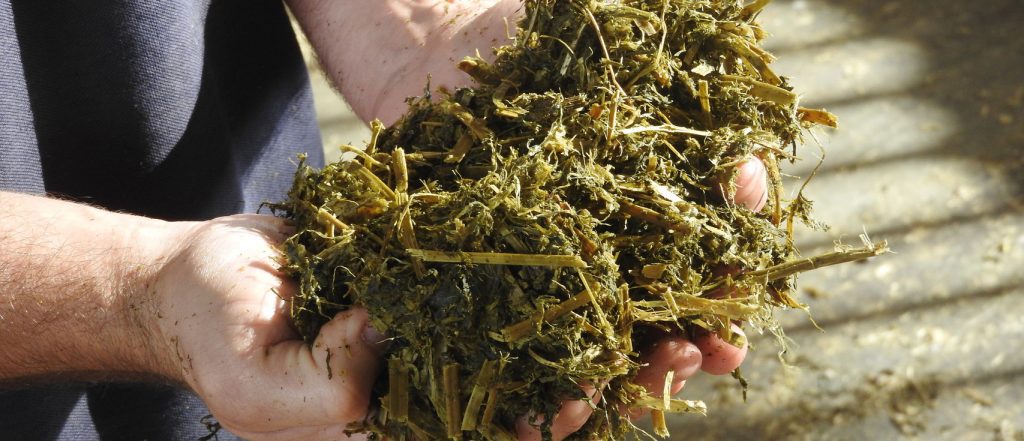Simon Gittins is growing a semi–dormant lucerne variety supplied by Germinal and is embarking on a zero–grazing and crop–drying enterprise that he hopes will produce a valuable high protein dairy feed.
“Lucerne is the world’s most extensively grown forage crop and is popular in countries with similar conditions to our own, such as Germany, and yet it is only grown on a tiny proportion of UK farms,” said Germinal GB’s National Agricultural Sales Manager Ben Wixey, who sees Lucerne as being massively underutilised in the UK despite the availability of semi–dormant varieties well–suited to the climate. Speaking at a training day for the agricultural trade in Shropshire he continued: “It requires free–draining soils and a soil pH of at least 6.2, but in these circumstances and with the right management it can yield 10–15 tonnes of dry matter that is high in protein, rich in trace minerals and is an excellent source of quality fibre. It is an ideal complement to maize silage in dairy rations and – being a legume that will fix its own nitrogen – can be grown without the cost of artificial nitrogen fertiliser.” Mr Wixey believes lucerne, which is typically spring–sown from the end of April, could become part of many farms’ forage armoury to help build more resilient businesses in the future. Lucerne silage is a rumen–friendly forage that provides a valuable source of protein and quality fibre.
Lucerne silage is a rumen–friendly forage that provides a valuable source of protein and quality fibre.
